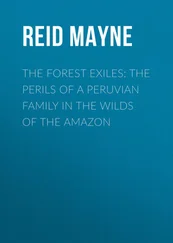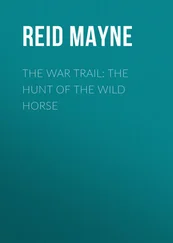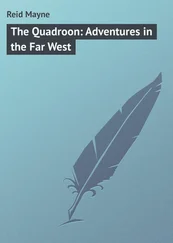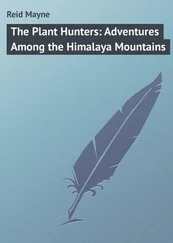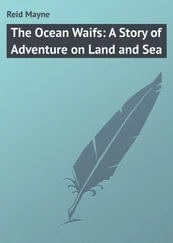Mayne Reid - The Desert Home - The Adventures of a Lost Family in the Wilderness
Здесь есть возможность читать онлайн «Mayne Reid - The Desert Home - The Adventures of a Lost Family in the Wilderness» — ознакомительный отрывок электронной книги совершенно бесплатно, а после прочтения отрывка купить полную версию. В некоторых случаях можно слушать аудио, скачать через торрент в формате fb2 и присутствует краткое содержание. Жанр: literature_19, foreign_antique, foreign_prose, foreign_adventure, на английском языке. Описание произведения, (предисловие) а так же отзывы посетителей доступны на портале библиотеки ЛибКат.
- Название:The Desert Home: The Adventures of a Lost Family in the Wilderness
- Автор:
- Жанр:
- Год:неизвестен
- ISBN:нет данных
- Рейтинг книги:5 / 5. Голосов: 1
-
Избранное:Добавить в избранное
- Отзывы:
-
Ваша оценка:
- 100
- 1
- 2
- 3
- 4
- 5
The Desert Home: The Adventures of a Lost Family in the Wilderness: краткое содержание, описание и аннотация
Предлагаем к чтению аннотацию, описание, краткое содержание или предисловие (зависит от того, что написал сам автор книги «The Desert Home: The Adventures of a Lost Family in the Wilderness»). Если вы не нашли необходимую информацию о книге — напишите в комментариях, мы постараемся отыскать её.
The Desert Home: The Adventures of a Lost Family in the Wilderness — читать онлайн ознакомительный отрывок
Ниже представлен текст книги, разбитый по страницам. Система сохранения места последней прочитанной страницы, позволяет с удобством читать онлайн бесплатно книгу «The Desert Home: The Adventures of a Lost Family in the Wilderness», без необходимости каждый раз заново искать на чём Вы остановились. Поставьте закладку, и сможете в любой момент перейти на страницу, на которой закончили чтение.
Интервал:
Закладка:
Mayne Reid
The Desert Home: The Adventures of a Lost Family in the Wilderness
Chapter One.
The Great American Desert
There is a great desert in the interior of North America. It is almost as large as the famous Saära of Africa. It is fifteen hundred miles long, and a thousand wide. Now, if it were of a regular shape – that is to say, a parallelogram – you could at once compute its area, by multiplying the length upon the breadth; and you would obtain one million and a half for the result – one million and a half of square miles. But its outlines are as yet very imperfectly known; and although it is fully fifteen hundred miles long, and in some places a thousand in breadth, its surface-extent is probably not over one million of square miles, or twenty-five times the size of England. Fancy a desert twenty-five times as big as all England! Do you not think that it has received a most appropriate name when it is called the Great American Desert ?
Now, my young friend, what do you understand by a desert? I think I can guess. When you read or hear of a desert, you think of a vast level plain, covered with sand, and without trees, or grass, or any kind of vegetation. You think, also, of this sand being blown about in thick yellow clouds, and no water to be met with in any direction. This is your idea of a desert, is it not? Well, it is not altogether the correct one. It is true that in almost every desert there are these sandy plains, yet are there other parts of its surface of a far different character, equally deserving the name of desert . Although the interior of the great Saära has not been fully explored, enough is known of it to prove that it contains large tracts of mountainous and hilly country, with rocks and valleys, lakes, rivers, and springs. There are, also, fertile spots, at wide distances from each other, covered with trees, and shrubs, and beautiful vegetation. Some of these spots are small, while others are of large extent, and inhabited by independent tribes, and even whole kingdoms of people. A fertile tract of this kind is called an oasis; and, by looking at your map, you will perceive that there are many oases in the Saära of Africa.
Of a similar character is the Great American Desert; but its surface is still more varied with what may be termed “geographical features.” There are plains – some of them more than a hundred miles wide – where you can see nothing but white sand, often drifting about on the wind, and here and there thrown into long ridges such as those made by a snowstorm. There are other plains, equally large, where no sand appears, but brown barren earth utterly destitute of vegetation. There are others, again, on which grows a stunted shrub with leaves of a pale silvery colour. In some places it grows so thickly, interlocking its twisted and knotty branches, that a horseman can hardly ride through among them. This shrub is the artemisia – a species of wild sage or wormwood, – and the plains upon which it grows are called by the hunters, who cross them, the sage prairies . Other plains are met with that present a black aspect to the traveller. These are covered with lava, that at some distant period of time has been vomited forth from volcanic mountains, and now lies frozen up, and broken into small fragments like the stones upon a new-made road. Still other plains present themselves in the American Desert. Some are white, as if snow had fallen freshly upon them, and yet it is not snow, but salt! Yes; pure white salt – covering the ground six inches deep, and for fifty miles in every direction! Others, again, have a similar appearance; but instead of salt, you find the substance which covers them to be soda – a beautiful efflorescence of soda!
There are mountains, too – indeed, one-half of this Desert is very mountainous; and the great chain of the Rocky Mountains – of which you have no doubt heard – runs sheer through it from north to south, and divides it into two nearly equal parts. But there are other mountains besides these; mountains of every height, and sometimes in their shape and colour presenting very striking and singular appearance. Some of them run for miles in horizontal ridges like the roofs of houses, and seemingly so narrow at their tops that one might sit astride of them. Others, again, of a conical form, stand out in the plain apart from the rest, and look like teacups turned upside down in the middle of a table. Then there are sharp peaks that shoot upward like needles, and others shaped like the dome of some great cathedral – like the dome of Saint Paul’s. These mountains are of many colours. Some are dark, or dark-green, or blue when seen from a distance. They are of this colour when covered by forests of pine or cedar, both of which trees are found in great plenty among the mountains of the Desert.
There are many mountains, where no trees are seen, nor any signs of vegetation along their sides. Huge naked rocks of granite appear piled upon each other, or jutting out over dark and frowning chasms. There are peaks perfectly white, because they are covered with a thick mantle of snow. These can always be seen from the greatest distance, as the snow lying upon them all the year without melting proves them to be of vast elevation above the level of the sea. There are other peaks almost as white, and yet it is not with snow. They are of a milky hue, and stunted cedar-trees may be seen clinging in seams and crevices along their sides. These are mountains of pure limestone, or the white quartz rock. There are mountains, again, upon which neither tree nor leaf is to be; seen; but, in their stead, the most vivid colours of red and green and yellow and white, appearing in stripes along their sides, as though they had been freshly painted. These stripes mark the strata of different coloured rocks, of which the mountains are composed. And there are still other mountains in the Great American Desert, to startle the traveller with their strange appearance. They are those that glitter with the mica and selenite. These, when seen from a distance flashing under the sun, look as though they were mountains of silver and gold!
The rivers, too. Strange rivers are they. Some run over broad shallow beds of bright sand. Large rivers – hundreds of yards in width, with sparkling waters. Follow them down their course. What do you find? Instead of growing larger, like the rivers of your own land, they become less and less, until at length their waters sink into the sands, and you see nothing but the dry channel for miles after miles! Go still farther down, and again the water appears, and increases in volume, until – thousands of miles from the sea – large ships can float upon their bosom. Such are the Arkansas and the Platte.
There are other rivers that run between bleak, rocky banks – banks a thousand feet high, whose bald, naked “bluffs” frown at each other across the deep chasm, in the bottom of which roars the troubled water. Often these banks extend for hundreds of miles, so steep at all points that one cannot go down to the bed of their stream; and often – often – the traveller has perished with thirst, while the roar of their water was sounding in his ears! Such are the Colorado and the Snake.
Still others go sweeping through the broad plains, tearing up the clay with their mighty floods, and year after year changing their channels, until they are sometimes an hundred miles from their ancient beds. Here they are found gurgling for many leagues under ground – under vast rafts formed by the trees which they have borne downward in their current. There you find them winding by a thousand loops like the sinuosities of a great serpent, rolling sluggishly along, with waters red and turbid as though they were rivers of blood! Such are the Brazos and the Red River.
Читать дальшеИнтервал:
Закладка:
Похожие книги на «The Desert Home: The Adventures of a Lost Family in the Wilderness»
Представляем Вашему вниманию похожие книги на «The Desert Home: The Adventures of a Lost Family in the Wilderness» списком для выбора. Мы отобрали схожую по названию и смыслу литературу в надежде предоставить читателям больше вариантов отыскать новые, интересные, ещё непрочитанные произведения.
Обсуждение, отзывы о книге «The Desert Home: The Adventures of a Lost Family in the Wilderness» и просто собственные мнения читателей. Оставьте ваши комментарии, напишите, что Вы думаете о произведении, его смысле или главных героях. Укажите что конкретно понравилось, а что нет, и почему Вы так считаете.


